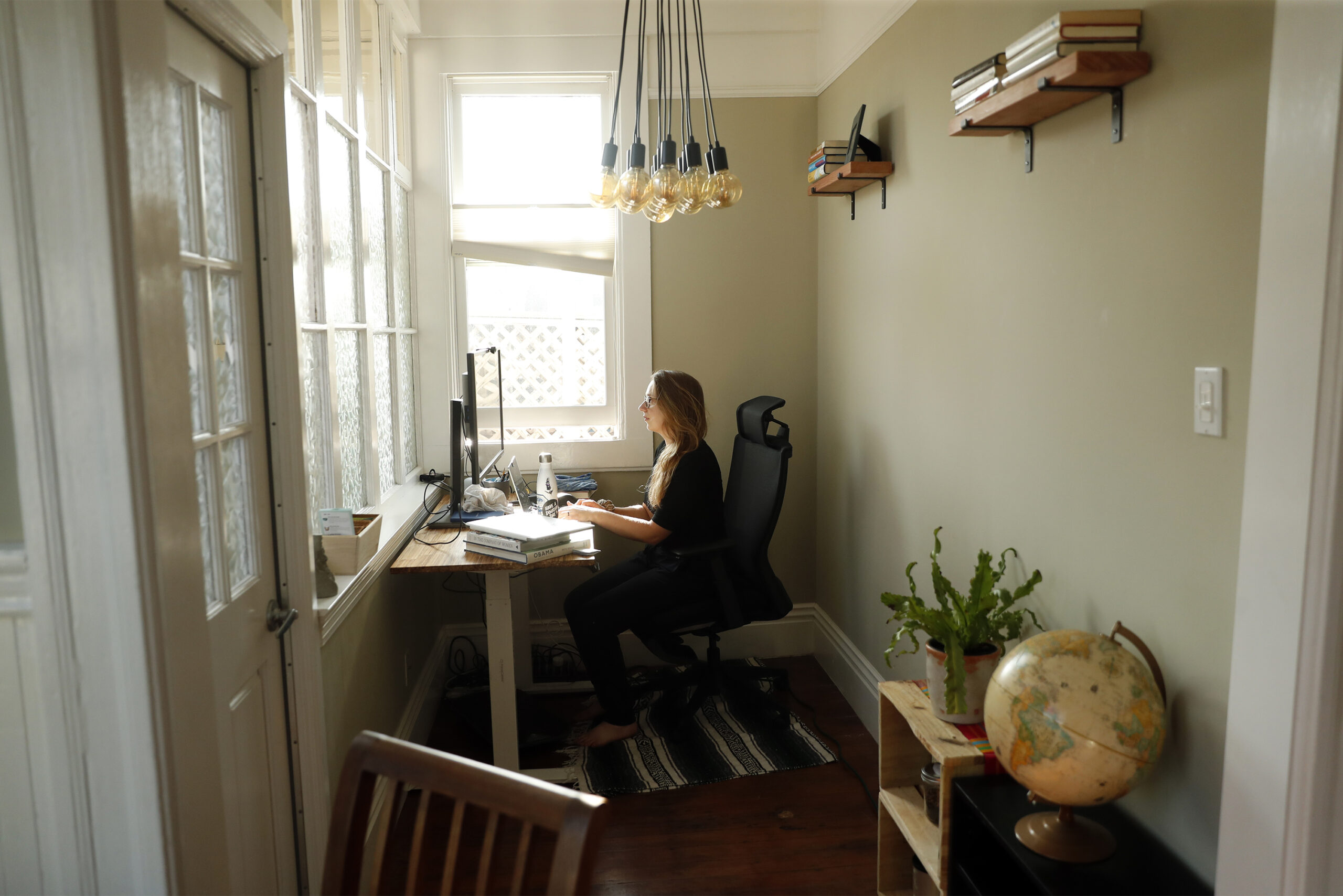The sluggish return of downtown office workers in San Francisco has lagged most peer cities in the country, and the city’s budget office has notched up its estimate of how often office workers will telecommute when the in-person return to the office stabilizes to 33%.
The figure is more than double the 15% number that was projected in San Francisco’s Five-Year Financial Plan, which was released in January, and is meant to reflect the growing momentum for long-term, hybrid work schedules among the city’s employers, as well as the current pace of the return to the office.
According to building access firm Kastle Systems, around 31% of office workers in the San Francisco metro area have returned to the office, reflecting a continuing gradual increase from the peak of the Omicron wave. Still, this proportion is stubbornly lower than a number of comparable cities like New York (36%), Los Angeles (40%) and Austin (53%).
“Hybrid is really here to stay,” said Carol Lu, the citywide revenue manager for the Controller’s Office. “We heard there would be a long-run average of being in the office about three to three and a half days per week, and that lines up with what we’ve been seeing in the news as well as some of the announcements by big businesses in the Bay Area.”
The sense that hybrid work is here for the long-term was bolstered by employee surveys and conversations with commercial real estate professionals.
The revised estimate is projected to negatively impact the city’s business tax revenue, which is tied to the share of a company’s total payroll that is physically in the city. Compared to the estimate issued in January, business tax is expected to drop by $64.6 million in FY 2022-23.
Sales tax revenue tied to purchases of goods and services downtown is also expected to suffer from the new work patterns.
It’s also a hit to Mayor London Breed’s key priority of bringing workers back to the office as part of the effort to revive San Francisco’s downtown core.
Longer term, the shift of workers away from the office may also have a negative impact on the city’s transfer tax revenue, which is paid out when major commercial buildings trade hands.
Currently, city officials say there is a gap between the prices sellers are willing to offer for those properties and the prices buyers are willing to pay because of the uncertainty in the office market. The result has been a slowdown in the number of commercial properties that are being sold in San Francisco, particularly in so-called commodity office space, which refers to buildings that aren’t top-tier trophy properties.
“They’re kind of looking at each other and playing chicken,” Lu said. “That’s been the story for a couple of years, but we didn’t expect it to persist for so long.”
Officials from the Controller’s Office said when they convened their annual forecasting conference in February to help them project the economic situation, the major theme was how exceptional San Francisco was — in a negative sense.
“San Francisco has been shut down for longer, has lower return to work numbers, has worse indicators for our hotel industry–we’re pretty much at the bottom of almost every indicator,” said Michelle Allersma, the director of the San Francisco Controller’s budget and analysis division. “The effect of the pandemic has been really different in different places… and it’s been really hard on very densely populated urban areas.”
Ted Egan, the city’s chief economist, places the current projections between the disaster scenario where all work turns virtual and sunnier predictions of a rapid return to normalcy.
While a hybrid work structure looks to be the situation for the next few years, he’s wary of making any permanent predictions.
“There is a scenario in which all of this hybrid office stuff is just a big mess and everybody just returns to the office. I wouldn’t totally discount that in three years that a combination of businesses and employees figure out they just can’t do this forever,” Egan said. “I don’t think it was a huge mistake that in 2019 all these companies were paying so much for rent in San Francisco–they must have been getting some value from that.”
